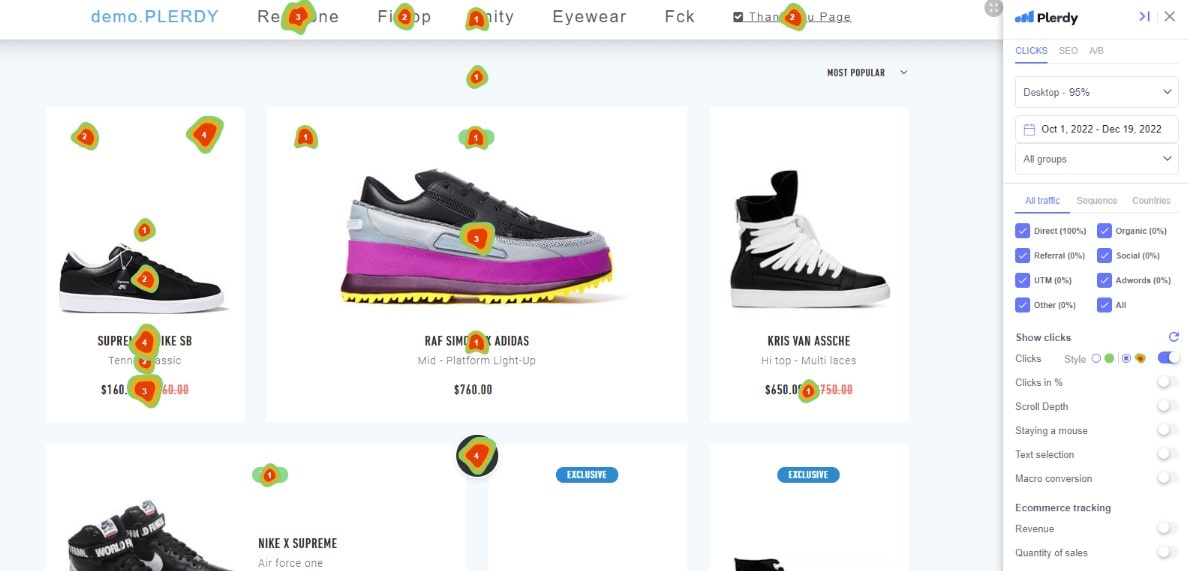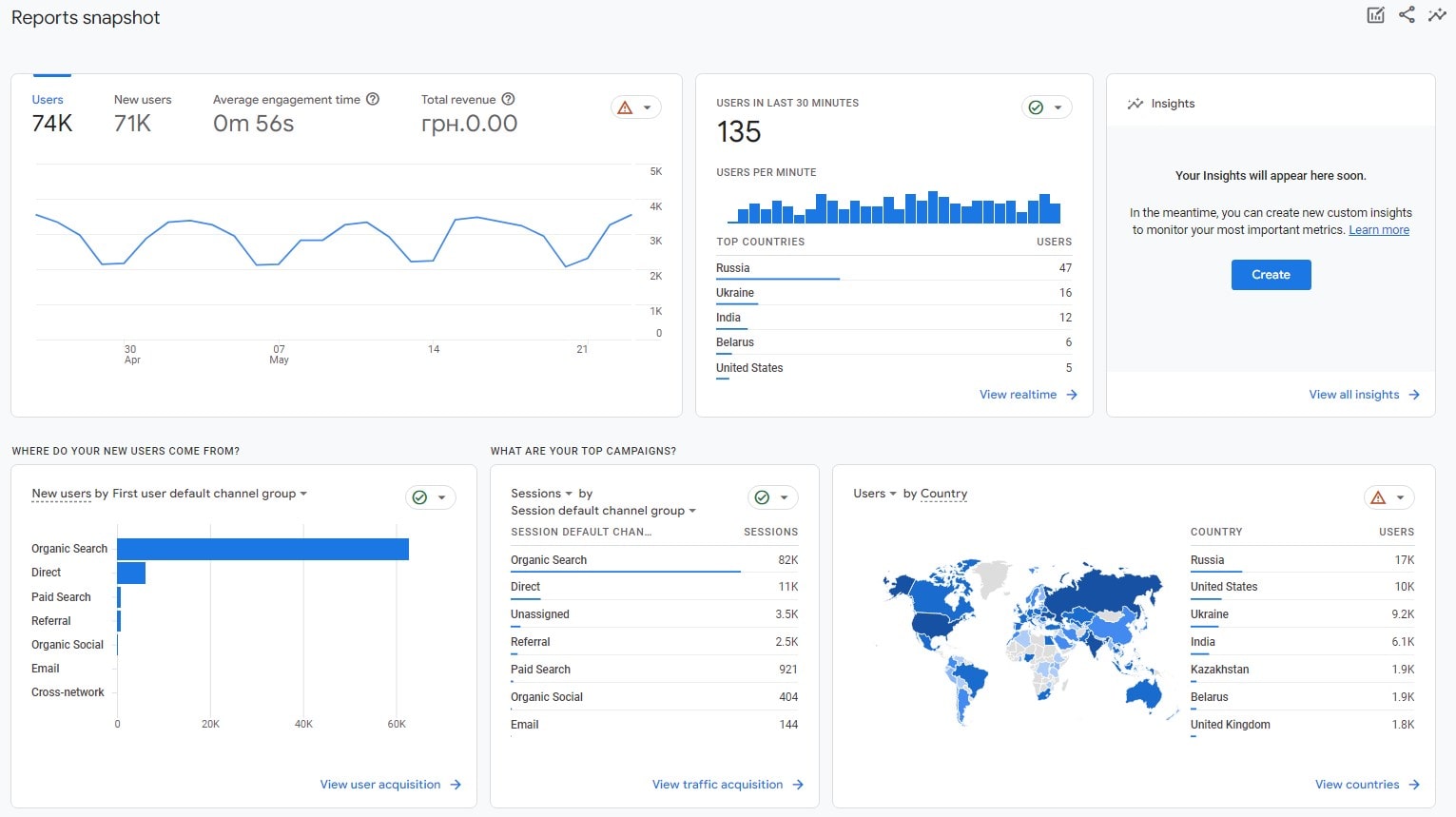Learning the skill of growth hacking is now more than simply a trend; it’s a need given the fast changing corporate scene of today. Different from conventional marketing, this creative strategy opens opportunities for companies aiming for fast growth and market influence. Deeply ingrained in creative and analytical thinking, growth hacking helps businesses reach amazing expansion in shockingly little time. Here at Plerdy, we see the transforming potential of this approach. Discover the “what” and “how” of growth hacking as you travel throughout our insights and expose useful, doable techniques catered for actual use. Stay closely; the next few minutes might completely change your strategy for company expansion.
Understanding Growth Hacking
In the corporate realm, the phrase “growth hacking” has generated a lot of discussion and attention. Fundamentally, growth hacking is a change in marketing and business development approaches driven by a concentration on fast expansion employing creative and unusual ideas. Here we will define growth hacking and discuss how it differs from conventional marketing. We will also go over the reasons development hacking has grown so crucial in the business environment of today.
Definition and Origins
The fundamental goal of growth hacking—which entails fast testing several marketing channels and product development strategies—is determining the best and most effective way to start a business. Originally coined by Sean Ellis in 2010, the phrase first helped to characterize a certain ability required of startups to reach expansion without the means of bigger companies. Growth hacking is about looking for quick victories and using inventive, low-cost ways to get a foothold, unlike conventional marketing, which sometimes depends on tried-through approaches and slow expansion. The emphasis is on agility, creative thinking, and a persistent search of improvement.
Growth Hacking vs. Traditional Marketing
Traditional marketing and growth hacking differ mostly in their methods and ultimate objectives. Using advertising, public relations, and direct marketing, traditional marketing usually centers on raising brand awareness and consumer loyalty over a longer term. Generally speaking, its approaches are more inflexible and frugal for finances.
While brand development comes second, growth hacking emphasizes on rapidly collecting consumers and invading marketplaces. Its success depends on inventiveness, insight, and the creative application of technology to pragmatic challenges. Like this:
- While conventional marketing emphasizes brand longevity, growth hacking targets explosive market expansion.
- Whereas growth hacking uses particular, scalable strategies for instant impact, traditional marketing uses a wide approach.
- Budget: While growth hacking is well-known for its low cost, traditional marketing sometimes calls for large costs.
- Unlike other conventional marketing techniques that could rely on less quantitative measures, growth hacking is data-driven and highly emphasizes measurable results.
Businesses negotiating the rapid digital terrain must first understand growth hacking. It’s not about completely discounting conventional marketing; rather, it’s about adjusting and using agile techniques for explosive development. Growth hacking is all about effectively and creatively turning challenges into chances for development, hence we should keep in mind this when we delve more on particular strategies and their applications.
Key Growth Hacking Strategies

Not only a buzzword, growth hacking is a survival strategy in the very competitive company climate of today. This part will look at several growth hacking techniques that have worked well in many different sectors. Emphasizing fast user acquisition and market interaction, every strategy is designed to be low-cost but quite powerful.
Leveraging Social Media
Regarding development hacking, social media is a rich mine. It’s about consistent posting that generates buzz to encourage users to share, interact, and convert. These are main strategies:
- Viral campaigns: produce original, funny, or emotionally moving material. Encouragement of sharing can help you to reach much more exponentially.
- Work with powerful people whose ideals complement those of your brand. Legally and with regard to audience reach, this can be quite helpful.
- Social Media Contests: Invite your readers to participate in contests supporting user-generated content. This improves both participation and the caliber of the created materials for usage in next marketing initiatives.
Content Marketing and SEO
Growth hacking depends critically on content marketing and SEO. They provide brand authority, boost natural traffic, and create a long-term internet presence.
- Create educational, search engine optimized blog entries addressing client pain issues. This raises search engine results and helps your brand to be seen as an authority.
- Guest posting helps other blogs in your field. This creates backlinks, so enhancing SEO, and exposes your business to fresh audiences.
- Target long-tail keywords and research keywords. Their decreased competition allows them to draw a more focused audience.
Email Marketing Techniques

Since email marketing lets you interact directly with your audience, it is among the best growth hacking strategies.
- Customize your emails using statistics in a personalized campaign. Customized material is more likely appeal for your readers.
- Create automated email systems for recent members. This follows customers down the sales funnel and keeps them interested.
- To maximize for higher open and click-through rates, routinely test several facets of your email campaigns, including subject lines and call-to-action elements.
Viral Marketing and Referral Programs
By use of word-of-mouth, viral marketing and referral programs can quickly increase your user base.
- Create readily shared material for your project. This might be interesting podcasts, striking videos, or educational infographics.
- Encourage referrals: Reward clients that bring in your good or service. This makes your current clientele a potent weapon for marketing.
- Showcase client quotes and reviews to provide social proof. The good comments of current clients have a big influence on new ones.
Product-Market Fit and Customer Feedback

Growth depends on knowing your market and compiling consumer comments.
- Review client wants and market trends constantly in market research. This will maintain demand for your product current.
- Procedures help you to gather and examine client comments in feedback loops. Apply this information to guide marketing plans and product development decisions.
- Regular updates of your product depending on comments and changes in the market help you iterate it. This maintains your product in line with consumer expectations and competitive.
Innovative Technology Utilization
In terms of growth hacking, following the curve entails adopting fresh technologies.
- Use tools designed to automatically handle routine marketing tasks. You will thus be able to give more time and effort to higher-level, strategic activities.
- Analytics tools let you examine consumer behavior and the success of your marketing. This data-driven strategy guarantees that your plans of action are focused and successful.
- New platforms: Watch as new technologies and platforms develop. Early adoption might open you chances and access to unexplored markets.
Leveraging Adjacent Markets
Entering related markets can open fresh growth prospects.
- Analyze markets closely related to your own where your good or service can address a relevant issue. One has to grasp the subtleties of these marketplaces.
- Customized Offerings: Create or change your products to fit the particular requirements of the surrounding market. This could call for little changes to your current offerings of goods or services.
- Strategic alliances: Work with companies in the related market. This can offer simple access points and insightful analysis.
Aggressive Content Marketing Strategy

Your internet presence and power will be much improved by a dynamic and forceful content marketing plan.
- Try several material forms, including podcasts, webinars, or interactive tests. Content diversity can draw several groups of your readers.
- Content syndication is: Syndicated blog entries or articles on more expansive platforms or via industry influencers will help you to increase the visibility of your work.
- To actually engage with your audience, participate on social media, comment sections, and discussion forums. This creates loyalty and a community centered on your brand.
Effective Use of Social Proof
One of the best ways to persuade others is by using social proof.
- Emphasize the sincere comments and experiences of clients who have found value in your product via case studies and customer testimonials.
- Partner with those who can really promote your product. Purchasing choices might be much influenced by their reputation and reach.
- User-generated content is: Get your consumers to braggle about your products. Apart from generating accurate knowledge, this also acts as social evidence.
Implementing Automation in Marketing

Automation of marketing simplifies your procedures and increases the effectiveness of your tactics.
- Use automated email sequences to develop prospects, enroll fresh clients, and re-activate inactive users.
- Automate your social media entries to have a constant online presence. Still, be sure you keep real involvement.
- Using tailored content and timely follow-ups, lead nurturing automation helps to automate the process of tending to leads.
Data-Driven Decision Making
Growth hacking calls for decisions based on data.
- Track user activity, website traffic, and conversion rates with solutions designed for analytics. Examine this information to determine what is and isn’t working.
- Tools for Customer Feedback: Use instruments to gather and evaluate client comments. This knowledge helps one better grasp consumer tastes and issues.
- Regular market research helps one to keep ahead of consumer expectations and industry trends.
Scaling Business with Technology
Accept technologies to effectively grow your company.
- Using cloud services will help you to be scalable and flexible in operations.
- Using customer relationship management tools will help you to better monitor and control client contacts.
- Emerging Tech: Watch for possible integration into your company processes for artificial intelligence and machine learning.
Optimizing User Experience (UX) for Growth

Retaining customers and motivating conversions depend critically on the user experience (UX).
- Design from the user’s perspective: concentrate on building an easy-to-use interface. Get user comments often to help us hone and enhance the UX.
- Make sure your apps and website are completely mobile device compatible, so offering a responsive and quick loading experience.
- Use usability testing to find and fix any obstacles in the user path.
Harnessing the Power of Referral Marketing
Referral marketing uses your current clientele to draw in fresh business.
- Create appealing referral schemes to encourage present clients to forward friends and relatives.
- Get people to discuss your work and make simple purchases of your items on social media.
- Invite your clients to participate so they will naturally speak well of your company to their friends and relatives.
Building a Strong Community Around Your Brand

The most important advantage of a brand might come from a strong community.
- Starting and managing online communities will help your customers to communicate about your company and interact with one another.
- Client Events and Webinars: Organize webinars or events displaying the knowledge of your brand that would benefit your community.
- Regularly engage your community, honestly and fast answering questions and comments.
Implementing Scalable Growth Models
Create models for expansion fit for your company.
- Find and concentrate on marketing channels with scalability and great return on investment.
- Make sure your company’s operations can quickly scale up and adjust as expansion picks speed.
- Encourage innovation, experimentation, and scalability in your company’s culture by means of growth-oriented approach.
Leveraging Analytics for Strategic Decisions

Your growth hacking plans should revolve mostly on data analytics.
- Using analytics tools will help you to learn about the performance of your campaigns, client behavior, and market trends.
- Use predictive analytics—that is, those able to predict the future—to project client needs and trends.
- Reviewing data often helps to maximize marketing efforts, product offers, and general corporate strategy.
Integrating Emerging Technologies
Using fresh technologies will always help you to be one step ahead of the competitors.
- Blockchain and cryptocurrencies: Look at how your company model might benefit from them particularly if openness and security are of great importance.
- Apply artificial intelligence and machine learning to automate tasks, personalize consumer experiences, and provide deeper understanding.
- Virtual and augmented reality (AR/VR) should be taken into account on how your marketing efforts or product offers might be improved.
Growth hacking is an always changing, learning, testing process. It calls for a dedication to really understanding your clients, embracing technology, and facing change head-on without regard to Using these growth hacking techniques helps you to prepare for exponential expansion rather than only seeking little changes. Recall that the core of growth hacking is agility and creativity; so, retain these as your compass to help you to change your company.
Implementing Growth Hacking in Your Business

Using growth hacking in your company calls for a methodical approach to include these ideas into your current corporate model, not only knowledge of the concepts. Here we will dissect the procedure into doable steps so that your foray into growth hacking is methodically and successful.
Assessing Your Business Needs
Evaluating your company’s needs is absolutely vital before delving into growth hacking. Learn about the state of affairs in your business presently and its expansion hacking objectives.
- Specify the objectives of your growth hacking – user acquisition, market expansion, or income generating process.
- Audit Current Strategies: You have to evaluate to determine what works and does not for your present marketing.
- Budget, personnel, and time are among the resources you could commit to support initiatives in growth hacking.
Setting Goals and Metrics
Good growth hacking is mostly dependent on well defined objectives and measurements. A SMART goal is one with a deadline, clear, quantitative, meaningful, and attainable characterizing quality.
- Describe Success: For your efforts at growth hacking, what does success mean? Is a percentage growth in income, market penetration, or a set number of new users?
- Select appropriate metrics. Choose indicators like client lifetime value, engagement levels, or conversion rates that fairly show your development toward your objectives.
- Constant observation: Create a mechanism to routinely review these metrics so that you may assess development and base decisions on facts.
Execution and Experimentation
The implementation and experimentation of growth hacking define it fundamentally. Here you implement the techniques and grow in knowledge from the results.
- Start with using one or two growth hacking techniques fit for your objectives.
- Encourage an attitude of experimenting whereby failure is recognized as a teaching moment.
- Use the comments and data from these tests to always hone and advance your methods.
Analyzing and Adapting
Analyzing results and adjusting strategy based on the data marks the last stage in growth hacking.
- Data Analysis: Review the material you acquired regularly from your growth hacking initiatives. See trends, achievements, and mistakes.
- Change Methods: Based on the data, be ready to adjust or turn around your plans. It’s mostly about flexibility.
- When a certain strategy shows promise, think about how it may be scaled or more completely incorporated into your company operations.
To apply growth hacking in your business, you must be committed, flexible, and eager to try new ideas. You may include growth hacking into the fabric of your company by evaluating your needs, defining clear targets, using an experimental approach, always analyzing and adjusting. Recall that creative and agile approaches lead to sustained development at last. As you start your road of growth hacking, keep these ideas front and front.
Challenges and Considerations in Growth Hacking

Growth hacking has issues even if it offers many chances for corporate development and creativity. Any company hoping to apply growth hacking techniques must first understand these possible obstacles.
Balancing Short-Term Wins with Long-Term Goals
Balancing short-term gains with long-term corporate goals is a fundamental difficulty in growth hacking. Although agile approaches and fast experimentation produce results right away, they have to fit your company’s more general goals. Maintaining your long-term brand strategy and reputation depends on ensuring these fast fixes fit.
Resource Allocation and Burnout
Resource allocation is another factor. Growth hacking calls for both financial and human resources and can be rather demanding. Overstretching your staff runs the danger of causing burnout and lower output. It’s crucial to distribute funds sensibly and make sure your staff can meet the needs and speed of growth hacking projects.
Maintaining Ethical Standards
Finally, keeping ethical standards in growth hacking is absolutely vital. Sometimes the push to reach explosive expansion results in dubious strategies. Maintaining ethical marketing standards and data privacy legislation is absolutely crucial. All efforts at growth hacking should first be focused on honoring consumer privacy and offering value.
Managing the difficulties of growth hacking calls for a careful strategy that takes ethical norms, your long-term vision, and team effect into account. Acknowledging these difficulties and adjusting your strategy will help you to properly and sustainably include growth hacking into your company’s agenda.
Finally
More than just a collection of strategies, growth hacking is a way of thinking combining analytical thinking, creativity, and openness to experimentation. Unlocking the possibility for rapid development and creativity, the path of including growth hacking into your company can be challenging yet profitable. The three most crucial elements in reaching success are, keep in mind, flexibility, learning from data, and juggling short-term triumphs with long-term goals. View previous pieces on Plerdy’s blog for more ideas and techniques to improve the expansion of your company. Furthermore keep in mind that Plerdy provides you with statistics and insights required for wise decision-making, therefore supporting your efforts at growth hacking. Visit Plerdy now to enable your path of growth-hacking!
